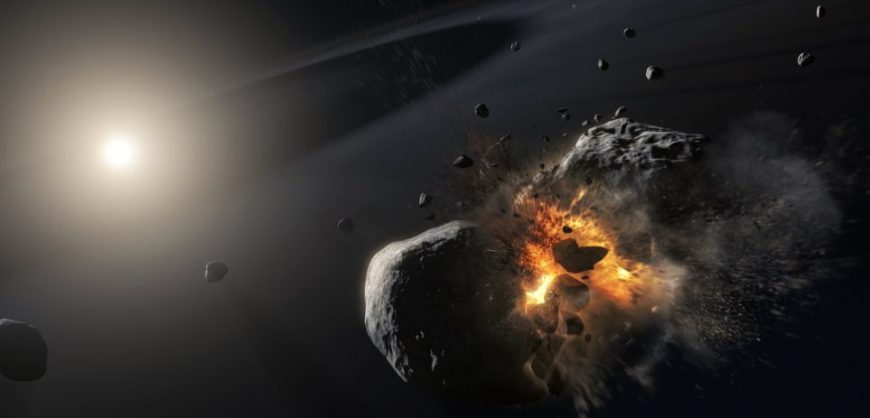By the end of the 21st century, stargazers may witness a “new star” seem to appear in the constellation Sagitta the Arrow. Located roughly 7,800 light-years away, the two stars, collectively called V Sagittae, are spiraling closer and closer together. And as they twirl around each other, the larger star is dumping material onto its smaller, white dwarf companion. Ultimately, the two will collide and coalesce, creating a powerful burst of light that astronomers estimate will make V Sagittae the brightest star in the night sky for about a month.
By referring to an archive of observations dating back more than a century, a team of researchers recently determined the two stars in the V Sagittae system have been spiraling in toward each other at an ever-increasing rate. Currently, it take about 12 hours for the stars to orbit each other once, but as they keep getting closer, the pair will continue to brighten. By the year 2083 — give or take 16 years — the researchers expect them to fully merge together.
The researchers presented the finding Monday at the 235th Meeting of the American Astronomical Society in Honolulu, Hawaii.
The longest sand beach in Europe is in Greece (drone video)
V Sagittae: An unusual system
The binary star system V Sagittae falls under the category of what astronomers call a cataclysmic variable. A white dwarf star and another star orbit each other, and the white dwarf pulls hydrogen from the tenuously held outer layers of its companion star. As the stolen material reaches the surface of the white dwarf, the intense gravity causes the hydrogen to ignite in a burst of nuclear fusion, which increases the brightness of the system.
Read more: astronomy






































